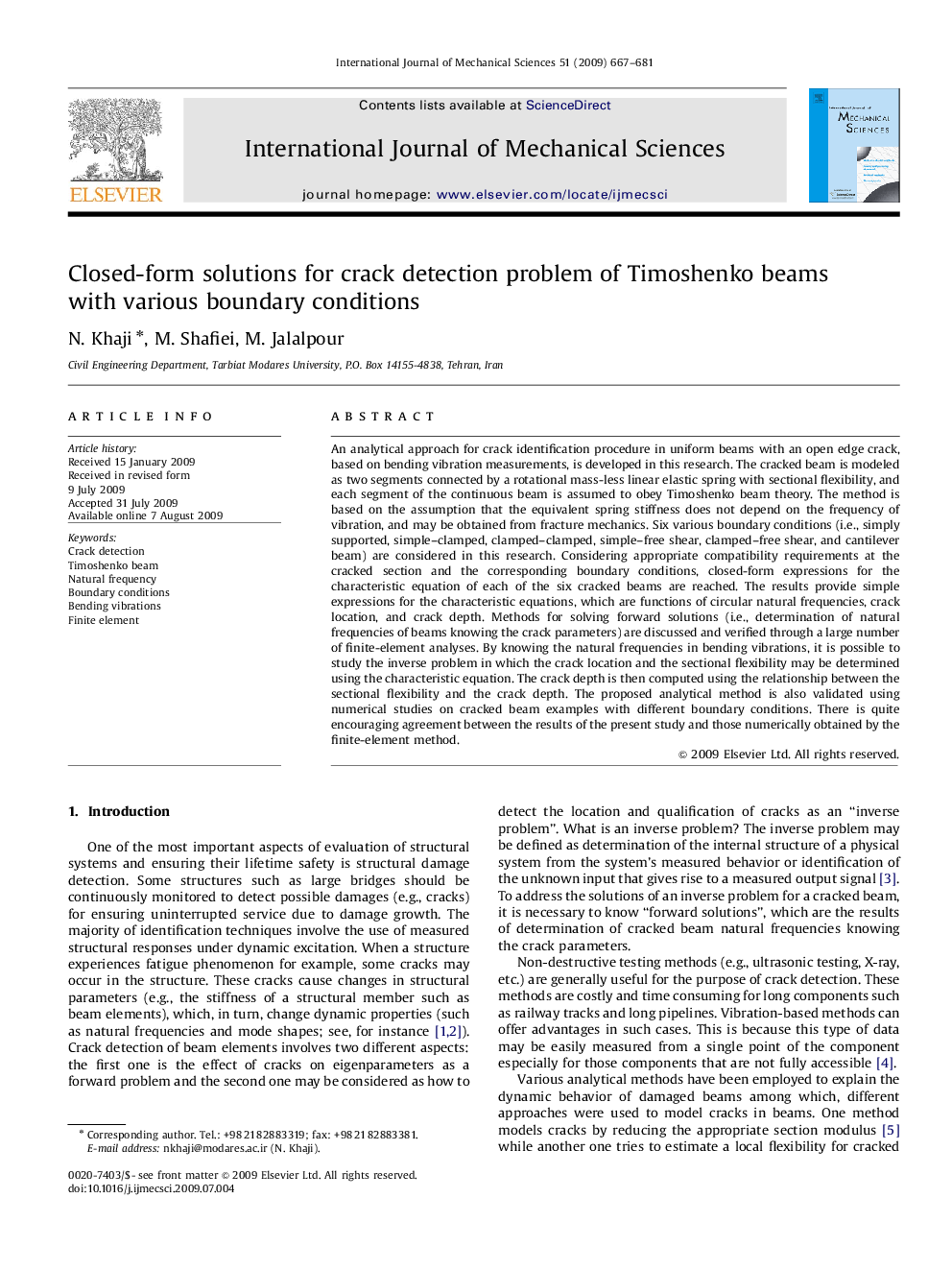| کد مقاله | کد نشریه | سال انتشار | مقاله انگلیسی | نسخه تمام متن |
|---|---|---|---|---|
| 780318 | 1465052 | 2009 | 15 صفحه PDF | دانلود رایگان |

An analytical approach for crack identification procedure in uniform beams with an open edge crack, based on bending vibration measurements, is developed in this research. The cracked beam is modeled as two segments connected by a rotational mass-less linear elastic spring with sectional flexibility, and each segment of the continuous beam is assumed to obey Timoshenko beam theory. The method is based on the assumption that the equivalent spring stiffness does not depend on the frequency of vibration, and may be obtained from fracture mechanics. Six various boundary conditions (i.e., simply supported, simple–clamped, clamped–clamped, simple–free shear, clamped–free shear, and cantilever beam) are considered in this research. Considering appropriate compatibility requirements at the cracked section and the corresponding boundary conditions, closed-form expressions for the characteristic equation of each of the six cracked beams are reached. The results provide simple expressions for the characteristic equations, which are functions of circular natural frequencies, crack location, and crack depth. Methods for solving forward solutions (i.e., determination of natural frequencies of beams knowing the crack parameters) are discussed and verified through a large number of finite-element analyses. By knowing the natural frequencies in bending vibrations, it is possible to study the inverse problem in which the crack location and the sectional flexibility may be determined using the characteristic equation. The crack depth is then computed using the relationship between the sectional flexibility and the crack depth. The proposed analytical method is also validated using numerical studies on cracked beam examples with different boundary conditions. There is quite encouraging agreement between the results of the present study and those numerically obtained by the finite-element method.
Journal: International Journal of Mechanical Sciences - Volume 51, Issues 9–10, September–October 2009, Pages 667–681